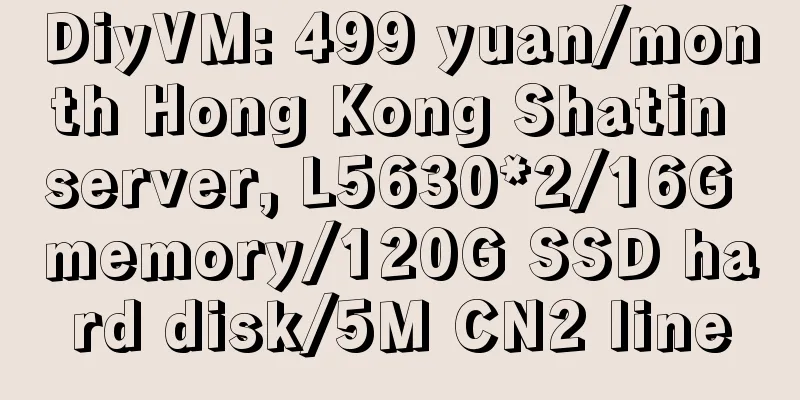From concept to practice, the trend of blockchain is coming

|
In accordance with the requirements of blockchain supervision, the three major domestic Bitcoin trading platforms, OKCoin, Huobi, and Bitcoin China, have all issued announcements to officially shut down all call auction transactions for virtual currencies to exchange for RMB. Cryptocurrency transactions have stopped, but blockchain technology is still moving forward. At the same time as announcing the suspension of RMB and Bitcoin transactions, OKCoin said that it would transform into a company that applies and develops blockchain technology. Coincidentally, Huobi.com founder Li Lin said at almost the same time, "Don't dwell on the past, don't fear the future." The future of blockchain is worth looking forward to!
As a technology that has become popular in the past two years, the development of blockchain can be said to be subversive. Its advantages of security, transparency and immutability have enabled it to be applied in many fields such as finance, medical care, and the sharing economy. In the top ten technology trends released by TrendForce, a global market research organization, for the development of the technology industry in 2018, it was mentioned that in 2017, blockchain technology has moved from concept to practice, and enterprises and governments have become more accepting of blockchain technology. In 2018, the blockchain commercial transfer test will screen out cases that can be applied on a large scale and leap from the practical stage to the commercial deployment stage. Concepts are sought after by capital Blockchain is the underlying technology of Bitcoin. Its basic idea is to establish a set of public ledgers on the Internet, and all users in the network jointly record and verify accounts in the ledgers to ensure the authenticity and immutability of information. The reason why it is called a "blockchain" is that the structure of blockchain data storage is composed of a chain of "storage blocks" on the network, and each block contains all the information exchange data in the network within a certain period of time. "The decentralized distributed structure can save a lot of intermediary costs when applied in reality; the tamper-proof timestamp feature can solve the problems of data tracking and information anti-counterfeiting; the secure trust mechanism can solve the core defects of today's Internet of Things technology; and the flexible programmable features can help regulate the existing market order." Based on the above advantages, many industry insiders believe that blockchain is becoming the representative of the next generation of FinTech (financial technology) technology, and its decentralized and trustless features will bring huge imagination and subversion to the market. In recent years, the transformative potential of blockchain has also received attention from the Chinese government. In October 2016, the Ministry of Industry and Information Technology issued the "White Paper on the Development of China's Blockchain Technology and Applications", which was also the first official blockchain guidance document to be implemented. At the end of that year, the State Council issued the "13th Five-Year National Informatization Plan", and blockchain and new technologies such as big data, artificial intelligence, and machine deep learning became the focus of national layout. In January 2017, the central bank successfully tested the digital bill trading platform based on blockchain technology; in May, the Ministry of Industry and Information Technology issued the first blockchain standard "Blockchain Reference Architecture"... As industry normative guidance documents are released one after another, blockchain support policies are gradually becoming clear and definite, and the process of blockchain industrialization is accelerating again. Not only traditional financial institutions, but also more and more Internet financial companies and technology companies are beginning to transform into financial technology companies. For example, China Wanxiang Holdings Co., Ltd. has started its strategic layout since 2015, and has gradually built a blockchain ecological platform integrating Wanxiang Blockchain Laboratory, Wanxiang Blockchain Business Innovation Consulting, New Chain Accelerator, Wanyun and other businesses, and has made every effort to promote the industry development and business implementation of China's blockchain from multiple aspects such as technology, capital, and resources. In September 2016, Feitian Chengxin (300386, Stock Bar) released the industry's first digital currency fingerprint hardware wallet CoinPass Bio based on blockchain technology, providing basic key security services for digital currency applications. Hengsheng Electronics (600570, Stock Bar) uses blockchain technology to implement a digital bill system based on alliance chain. Technology companies represented by BAT are also vying to deploy blockchain technology in the financial field: Tencent took the lead in establishing WeBank, participated in the launch of the Financial Blockchain Cooperation Alliance, launched the Tencent Cloud-based Alliance Chain Cloud Service and released a blockchain white paper. Alibaba's Ant Financial tried to apply blockchain to public welfare scenarios, and launched the blockchain public welfare fundraising project "Hearing-impaired Children Regain New Voice" on the Alipay Love Donation Platform, so that every donation can be tracked throughout the process. Baidu Finance and its partners including Baiqian Leasing and Huaneng Trust jointly issued consumer car leasing debt private ABS (asset securitization) supported by blockchain technology. Technology enters application scenarios After the initial accumulation, 2017 was the first year of blockchain technology application, which was also a key year for blockchain to move from proof of concept to production environment. This year, a large number of innovative models different from centralized platforms emerged in the fields of law, art, music, energy, supply chain, and medical care. For example, in the medical industry, the historical data of blockchain technology cannot be tampered with, and it can record medical and health records at any time. It also has encryption technology, which fully protects the privacy of patients. Recently, Yunxiang Blockchain and Inspur Group have cooperated. Yunxiang Blockchain provides a blockchain BaaS platform. Inspur Group develops medical and health applications based on the Yunxiang Blockchain platform, aiming to improve the efficiency and transparency of the medical industry through blockchain technology. JD Fresh signed a contract with Henan Shuanghui Investment Development Co., Ltd. and Smithfield Foods of the United States to carry out deeper cooperation in the fields of big data, cold chain and traceability, which can ensure that every piece of pork shipped from the United States to China has a "certificate" to be found. It is worth mentioning that JD Fresh's blockchain traceability technology has also been successfully applied to a variety of fresh products such as beef, chicken, seafood, etc. At the recent OneCloud strategy conference, Xunlei CEO and NetMind Technology CEO Chen Lei and 4K Garden Chairman Wu Yi jointly announced that Xunlei and 4K Garden have reached an in-depth strategic cooperation. The two parties will carry out in-depth cooperation in the areas of content distribution, copyright distribution, and transmission of high-definition video content on the shared computing blockchain. It is undeniable that blockchain technology is gaining favor in more and more industries. TrendForce predicts that in terms of application areas, the financial industry will take the lead, and it is initially estimated that 30% of financial institutions around the world will launch commercial blockchain solutions in 2018; at the same time, under factors such as blockchain standard setting and regulator participation, the fiercely competitive blockchain platforms will gradually integrate to realize the value of this technology, prompting commercial applications to spread to areas other than finance. "We believe that Bitcoin is only the first initial application of peer-to-peer value transfer in the Internet era, and blockchain technology will usher in a new era. It will have a profound impact on the real economy and make a significant contribution to the efficiency of global economic operations. Blockchain will become one of the symbols of a country's scientific and technological strength." OKCoin said. The industry's "pain points" need to be solved. "Combining distributed ledgers and decentralized technologies can open up a new business model. This is not a purely virtual market hype, nor is it a low-level data storage technology. Blockchain has its own market space and will have relatively large development opportunities in the future." Li Qilei, chief technology officer (CTO) of QuChain Technology, believes. However, in fact, inconsistent standards, chaotic derivative markets, security threats and difficulties in supervision have gradually exposed the weaknesses of the healthy development of the blockchain industry. The first domestic standard "Blockchain Reference Architecture" issued recently, through the explanation of the user view and functional view of blockchain, detailed provisions for the main participants and core functional components of blockchain, and systematically described the blockchain ecosystem. Zhu Tao, executive director of the Blockchain Industry Alliance of China High-tech Industrialization Research Association, said that in the situation where there are fakes and fakes, the national standard has put a tight ring on its development, which can be said to directly hit the pain points of the industry. Strict management means attention, not killing, but reshuffle the industry development and let blockchain return to the normal track of technology and application. In addition, as a large amount of capital has entered the blockchain industry, blockchain technology has developed rapidly in recent years, resulting in the emergence of a large number of fake digital currencies on the market that are suspected of engaging in pyramid schemes, fraud, and illegal fundraising under the banner of digital currencies. At the same time, in terms of engineering implementation and practical applications, the security issues of blockchain technology have not received corresponding attention. In this regard, Li Ming, director of the Blockchain Research Laboratory of the China Institute of Electronics Standardization, believes that the development of each technology needs to go through the start-up period, development period, sedimentation period, and maturity period. While improving the technical system, it is also necessary to improve its own limitations so that it can become a technology that can be widely used in different scenarios. Zhu Tao said: "The first priority now is to create standardized blockchain courses, popularize the concept of blockchain technology, and cultivate blockchain technology talents. I hope to continue to find suitable application scenarios for blockchain technology in a broader wave of thinking and drive blockchain technology towards maturity." |
<<: These 22 IoT terms will make others worship you just by saying any one of them
>>: F5: Hybrid cloud architecture behind the "Double Eleven" carnival
Recommend
Justhost has launched its 22nd node in Türkiye, with 200Mbps unlimited VPS starting at $1.73 per month
Justhost.ru recently launched its 22nd VPS node: ...
JustVPS New London VPS 30% off, $3.08/month - 1GB/20GB/300M unlimited traffic
JustVPS.pro recently launched a new VPS in London...
ITU releases draft specification, a big step forward in 5G standardization
According to foreign media reports, despite the o...
"e-Enterprise Networking, Setting Sail for a Long Journey", China Mobile's new e-Enterprise Networking product is officially released
On January 16, China Mobile and Huawei successful...
[Important Event] Be neither arrogant nor give up, stick to the original intention, the 2023 Jinrui Marketing Award works collection is officially launched
111.jpg The explosive marketing of the "frag...
DogYun launches Chongqing independent server with monthly payment starting from 200 yuan, E5-2630v4/64GB memory/800G SSD hard drive
DogYun has been mainly providing independent serv...
What will 6G look like in the future?
[[389986]] At the recently concluded MWC Shanghai...
[11.11] iOVZ: 60% off monthly payment/50% off annual payment for all VPS/dedicated servers, Hong Kong/Korea VPS monthly payment starts from 36 yuan
iOVZ Cloud has launched a promotion during the 20...
BICS Group acquires 3m Digital Networks to accelerate transformation into communications platform provider
MicrosoftInternetExplorer402DocumentNotSpecified7....
5G is here! How long will it take for it to be truly universally adopted?
4G, the mobile network that allows us to make cal...
edgeNAT VPS 30% off monthly payment, 40% off annual payment, deposit 500 and get 100 yuan, US/Hong Kong/Korea data center
edgeNAT has launched a promotion in February to w...
Is the integrated air-space-ground information network really coming?
[[408522]] In recent years, with the popularizati...
What is the difference between Cat-M1 and NB-IoT?
Cat M1 and NB-IoT are two of the most popular IoT...
China Mobile Capital leads the investment in Unisplendour Cloud, completes 600 million yuan financing and focuses on the government and enterprise market
On September 15, Unisplendour Cloud Technology Co...
The struggle between operators and users: Who decides my package?
What service do you like the most? The most likel...









